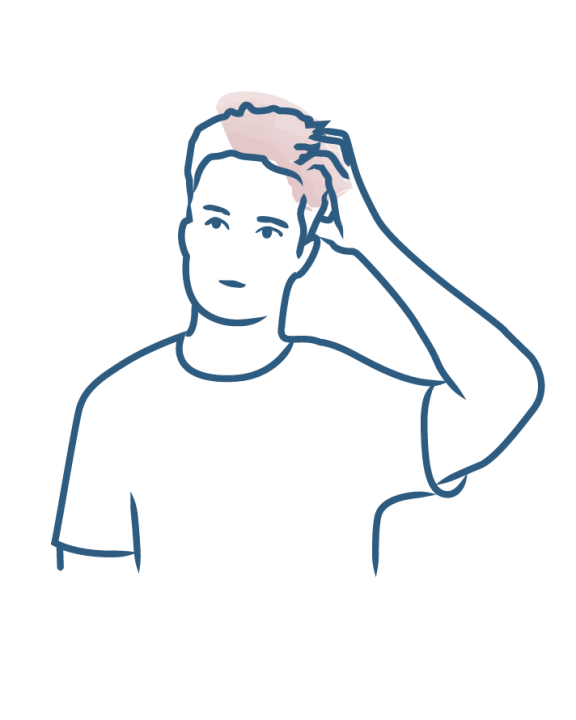Causes of itching: why do we scratch?
Aquagenic Pruritus

Aquagenic Pruritus
Aquagenic pruritus is a rare form of pruritus, which, as its name suggests, appears following contact with water. It poses many problems on a daily basis because water is present everywhere. Aquagenic pruritus is a very particular form of pruritus that has negative consequences on the quality of life of those affected.
What is aquagenic pruritus?
Aquagenic pruritus is pruritus caused by water. It appears within minutes of skin contact with water, whether from a shower, bath, dip in the pool, raindrops, sweat or even tears. The person suffering from aquagenic pruritus feels itching sensations, but also tingling, burning sensations or even real pain that is difficult to bear. Itchy skin after a shower causes a lot of discomfort, even irritability and anger.
Aquagenic pruritus occurs regardless of the temperature of the water, although some patients notice differences in the intensity of the pruritus depending on whether the water is hot or cold. Itching after a shower usually subsides within minutes or hours.
Aquagenic pruritus should not be confused with aquagenic urticaria, which is a particular form of physical urticaria involving the appearance of red, pruritic plaques following contact with water. In cases of aquagenic pruritus, there are no visible skin lesions.
Similarly, aquagenic pruritus is a reaction to water but is not, strictly speaking, an allergy. People with this condition can drink water normally.
What are the causes of aquagenic pruritus?
In the majority of cases, the cause of pruritus is unknown. It is then considered an idiopathic or isolated aquagenic pruritus. Internal and external factors can influence the condition such as skin dryness or stress.
In some cases, aquagenic pruritus is secondary to a blood disease. The most common disease is polycythemia vera. It is a myeloproliferative neoplasm in which the body makes red blood cells in a disproportionate and uncontrolled manner. An overproduction of white blood cells and platelets is sometimes associated with the condition. In cases of aquagenic pruritus, it is therefore important to go see your doctor to verify the absence of blood diseases.
How do you treat aquagenic pruritus?
In cases of aquagenic pruritus related to blood diseases, prescribed medication usually alleviates the symptoms.
On the other hand, in cases of idiopathic or isolated aquagenic pruritus, there is no specific treatment. Medications such as anti-histamines can be tried but are rarely effective.
Phototherapy is also proposed to some patients with aquagenic pruritus, but here again, it is not always effective. Finally, psychological monitoring is an integral part of the treatment.
How should you wash with aquagenic pruritus?
In cases of aquagenic pruritus, washing can quickly become a nightmare because it causes severe itching. Here are some habits to adopt on a daily basis:
- Take quick showers or baths, avoiding overly powerful jets so as not to overstimulate the nerves present in the skin.
- Take lukewarm or cool showers if you have noticed an improvement with cold.
- Use mild, fragrance-free cleansing products such as superfatted soaps, syndets or cleansing oils. Rinse thoroughly.
- Dry the skin well, dabbing gently with a soft cotton towel.
- To avoid itchy skin after a shower, apply a moisturizer rich in anti-itching active ingredients all over the body, focusing on the areas that itch the most.
- Some people with aquagenic itch choose to alkalize their bath water by adding baking soda, while others prefer to wash every other day to limit itching after showering.
- During aquagenic pruritus flareups, implement measures to soothe both the skin and the mind: keep your hands busy so as not to scratch, listen to soft music, relax, breathe deeply, use methods such as sophrology, coherent breathing, medication or yoga.
More information
- Discover Pruritus gravidarum or itching related to pregnancy
Causes of itching: why do we scratch?
Pruritus gravidarum or itching related to pregnancy
- Discover Senile Pruritus
Causes of itching: why do we scratch?
Senile Pruritus
- Discover Sun Allergy
Causes of itching: why do we scratch?
Sun Allergy
- Discover Dermatological Pruritus
Causes of itching: why do we scratch?
Dermatological Pruritus
- Discover Pruritus sine materia
Causes of itching: why do we scratch?
Pruritus sine materia
Our care routines
Itching on the scalp
Dermatological expertise
To better understand your skin and hair, discover our exclusive content and innovative care products designed to improve your quality of life..

